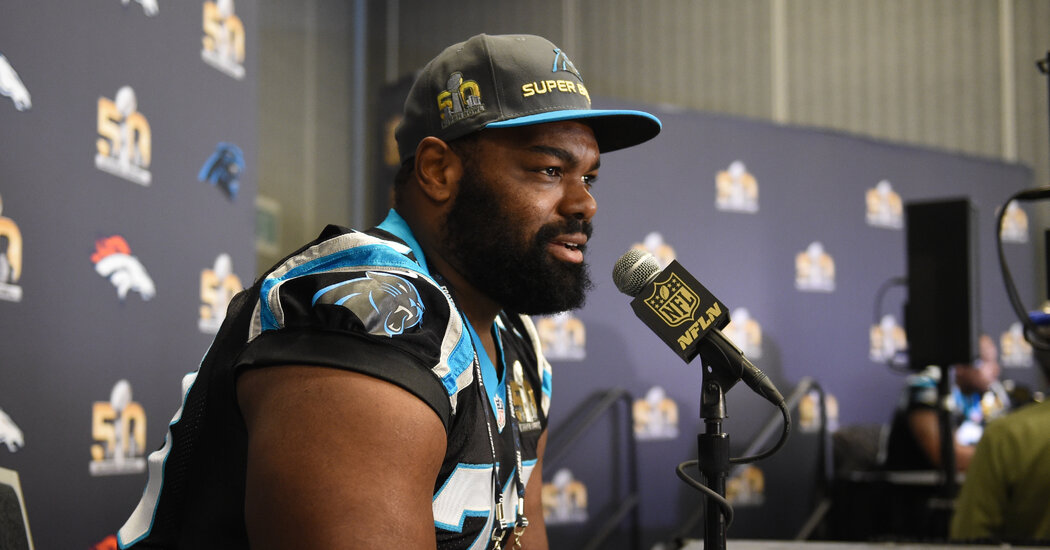How Belichick Helped Patriots Go From Laughingstock to Economic Powerhouse
It’s hard to imagine now, after six Super Bowl titles and two decades atop the N.F.L., but for most of their existence the New England Patriots were awful.
The team didn’t have a permanent home for its first decade, and then left Boston in 1971 for the windswept Schaefer Stadium in Foxborough. The owners fought and sank into debt. Brief moments of winning, including two Super Bowl appearances last century, were punctuated by years of losing.
The fortunes of the franchise began to change in 1994 when Robert K. Kraft, a local businessman and longtime Patriots season ticket holder, bought the team. His first years in charge were rocky, but in 2000, he hired Bill Belichick, a coach who doubled as a de facto general manager and chose quarterback Tom Brady in the sixth round of the draft.
The triumvirate created one of the most successful dynasties in sports and the third most valuable franchise, worth an estimated $7 billion. They joined the rarefied company of teams like the New York Yankees and the Dallas Cowboys, internationally recognized brands synonymous with American success. While it once would have been rare to glimpse the team’s Pat the Patriot logo south of Hartford, Brady jerseys became a common sight in countries around the globe. Kraft, in turn, became one of the N.F.L.’s most influential owners.
“They were a laughingstock,” said Upton Bell, a general manager of the woe-begotten Patriots teams in the 1970s and a longtime radio host in Boston. “As much as I like to think I can see far ahead, I never would have imagined this much success.”
Between 2001 and 2019, the Patriots won an astounding 76 percent of their regular-season games and went to nine Super Bowls, winning six. The startling run had three constants: a committed owner in Kraft, a generational quarterback in Brady and a master tactician in the taciturn Belichick.
In many ways, the era ended after the 2019 season, when Brady left for the Tampa Bay Buccaneers. The Patriots are 29-38 in the regular season over the four seasons since Brady’s departure, a .433 winning percentage.
But the dynasty truly came to a close on Thursday when the team confirmed reports it had parted ways with Belichick, 71, the second winningest coach in N.F.L. history. The Patriots will now need to prove that they can reach the same heights on or off the field without Brady and Belichick.
Though Belichick’s tenure in New England ended unceremoniously, he will be remembered more for the wins he, Brady and Kraft piled up and the way they elevated the Patriots’ brand to the highest echelons of sports.
It was particularly notable that they accomplished this in the N.F.L., where teams operate under a salary cap, which annually sets a limit for player payroll with harsh penalties for those who exceed it. That stricture forces teams to constantly rebuild their rosters to compete.
None of the leaders of the dynasty acted alone. Kraft recognized that he needed to step aside when it came to managing the roster. Brady was a team leader on the field and was willing to restructure his contract so there was enough money left to sign other players.
Yet Belichick mastered the economics of the salary cap like no one else, clinically dispensing with fan favorites and aging, expensive stalwarts in his never-ending search for what he called “value.”
Scott Pioli, the Patriots’ top player personnel executive during the team’s first three Super Bowl titles, said, “We made some decisions and did some things that we didn’t want to do, yet the decisions were made because we had an obligation to the 52 other players” and the rest of the organization.
“We were going to make what we felt were the best decisions in order for us to have the most success,” he said.
Every team has operated under the same constraints since N.F.L. owners 30 years ago introduced free agency and team salary caps, ending years of labor strife, but also forcing teams to rethink how they built their rosters. Al Davis, the maverick owner of the Los Angeles Raiders, predicted at the time that many of his brethren, used to having most of the leverage in contract talks, would find this new world disorienting.
“It’ll be like the Russians learning the free market,” Davis said of the owners and the new system.
The salary cap undid the dynasties in big-market cities like Dallas, San Francisco and Washington. Belichick and his staff, though, seemed to have a knack for finding players undervalued by others and the moxie to walk away from proven stars in a sport with very high injury rates that can upend even the most sturdily constructed teams.
Belichick kept the Patriots together using a utilitarian approach to finding talented players while keeping salaries down. Kraft gave him the freedom to do so, having learned from his experience with the former Patriots coach Bill Parcells, who was Belichick’s mentor. Parcells famously griped about Kraft’s meddling on his way out in 1996, saying, “If they want you to cook the dinner, at least they ought to let you shop for some of the groceries.”
Belichick’s value-driven approach began his first year in Foxborough when he chose the unheralded Brady in the sixth round of the 2000 draft even though Kraft was smitten with quarterback Drew Bledsoe and helped negotiate a 10-year, $103 million contract extension with him in early 2001.
After Bledsoe was injured early that season, Belichick quickly pivoted to Brady, who led the Patriots to their first Super Bowl victory in 2002. Bledsoe and his mammoth contract were gone the next year. In 2003, Belichick cut defensive back Lawyer Milloy, a team captain, days before the season opener after he refused to take a pay cut. The message was crystal clear: Anyone was replaceable.
The N.F.L.’s salary cap was introduced during Belichick’s first head coaching stint, with the Cleveland Browns, but his mastery of it took time. After Belichick arrived in New England, he asked Pioli and Ernie Adams, the team’s director of football research, to create a new grading scale for player scouting that incorporated the relative value of each position and factored in a player’s versatility. They also began tying incentives in player contracts not just to individual statistics but also to team success.
The Patriots’ first championship roster was built with the help of good drafting and the signings of numerous undervalued free agents. In 2001, Pioli remembers committing a relatively paltry amount, about $2.5 million, in bonuses to sign nearly two dozen veteran players.
“We were signing all of these guys that we knew were good players but no one else really wanted,” he said. “If you go back to articles, people were laughing at us vocally in the media, and they said that we were on this bargain basement, discount shopping.”
After a brief lull in 2008, when Brady was injured and the Patriots missed the playoffs, Belichick’s teams renewed their dominance, winning three more Super Bowls. Belichick continued to move on from players before their skills started to decline or they were due a big payday. He stunned the league by trading defensive lineman Richard Seymour in 2009 and offensive guard Logan Mankins in 2013. He also recognized the potential in undersized and unheralded players like Wes Welker and Julian Edelman, who became star receivers playing primarily out of the less-valued slot position.
“I’ve never in my entire life been around somebody in the football profession that had that unique, rare combination of mastering both insight and foresight,” said Charlie Weis, the former Notre Dame and Kansas head coach who served as Belichick’s offensive coordinator from 2000-4.
The insight showed up in how he coached his team each week, crafting bespoke game plans that took advantage of an opponent’s specific weaknesses. The foresight was building his team with not only the current season in mind, but also with an eye toward the future, understanding that was what the salary-cap era required.
“How many teams are one-year wonders?” Weis said. “They’ll go all in for a year and then shortly thereafter they fall off the cliff really fast. Well, that wasn’t what he did. He built a team that could stand the test of time.”
As Belichick’s teams declined without Brady, critics have minimized the coach’s role in the team’s success. But wins don’t lie, and Belichick delivered them, turning the once moribund Patriots into a valuable franchise to be reckoned with, on and off the field.


